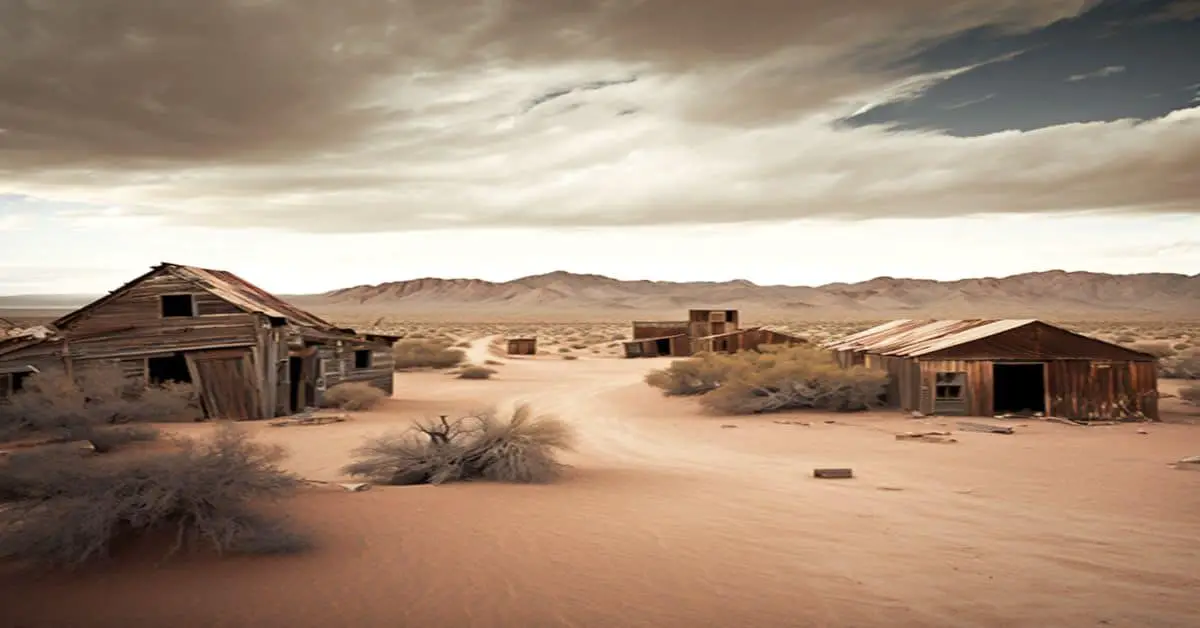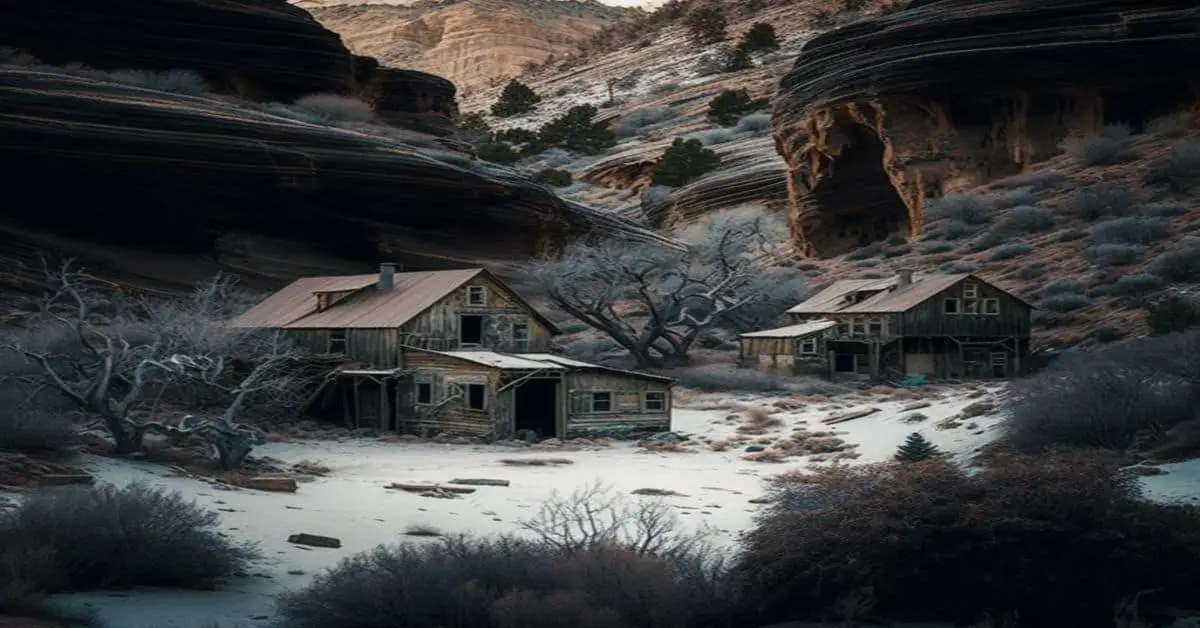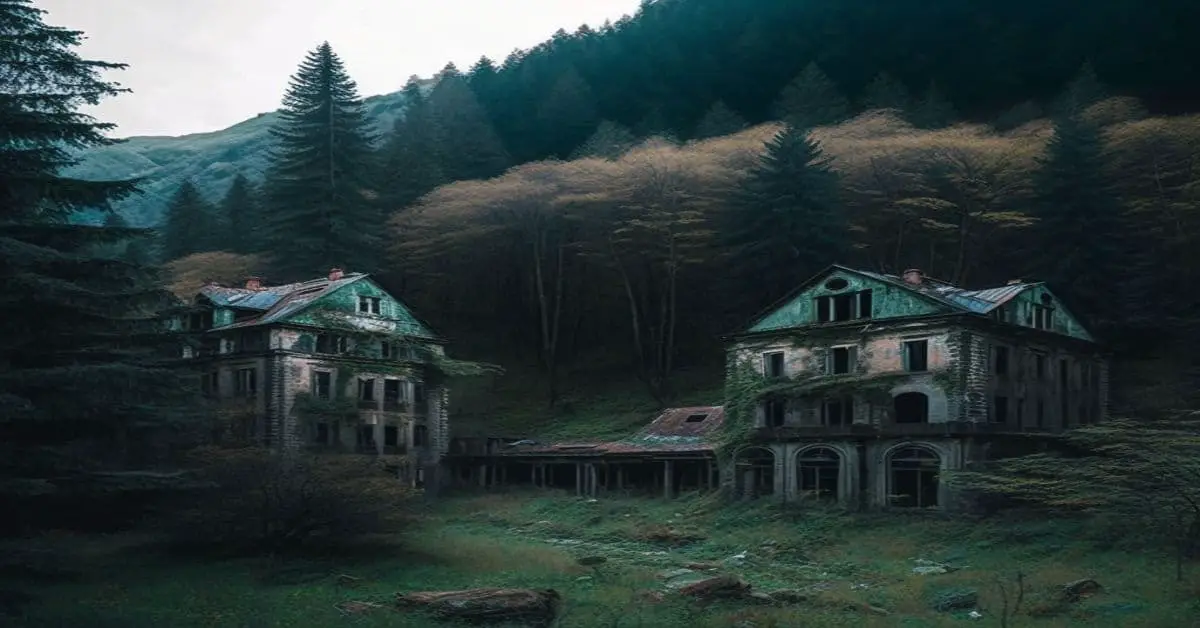Nestled amidst the serene landscapes of Northern California, lies a semi-abandoned town that is steeped in history and charm. Magalia, CA is a destination that will leave a lasting impression on anyone who ventures into its midst.
While not as bustling as it once was, the town still holds the tales of its glory days, when it was a prominent stage stop on the Oroville-Susanville road and the site of discovering the largest gold nugget in the state’s history.
Visiting Magalia is like stepping back in time, as the original buildings still stand tall, and the town’s rich heritage is evident in every corner. The Magalia train depot, built in 1906, has been transformed into a restaurant, offering a unique dining experience for visitors.
This semi-ghost town might not be on everyone’s itinerary, but those who do venture out to explore its history will surely be rewarded with a memorable experience.
In this article, we will delve into the historical significance of Magalia, its current state, and the attractions that make it a unique destination worth exploring.
Key Takeaways
- Magalia, CA is a semi-abandoned town in Northern California with a rich history as a prominent stage stop on the Oroville-Susanville road and the discovery site of the largest gold nugget ever found in California.
- Despite its current semi-ghost town status, Magalia still attracts visitors with its natural beauty, historical landmarks like the Magalia train depot-turned-restaurant and the Old Magalia Inn bed and breakfast, and outdoor activities like hiking, camping, fishing, and birdwatching.
- The region has various wildlife, including black bears, mountain lions, coyotes, bobcats, deer, and migratory birds.
- Magalia’s cool winter and mild summer climate offer a comfortable environment for visitors to explore the town’s remaining original buildings and hidden gems.
Location and Climate
Magalia, a California ghost town located off SR 191 and SR 70 North of Sacramento in Butte County, is situated amidst diverse geographical features and wildlife. The town is nestled in the Sierra Nevada foothills, surrounded by dense forests, meadows, and waterfalls.
The region is home to various wildlife, including black bears, mountain lions, coyotes, bobcats, deer, and migratory birds. The town’s cool winter and mild summer climate offer a comfortable environment for visitors to explore the region’s natural beauty.
Magalia’s unique geographical features and wildlife diversity make it a popular destination for nature enthusiasts and adventure seekers. Visitors can go hiking, camping, fishing, and birdwatching in the nearby forests and rivers. The town’s location, surrounded by natural beauty, makes it ideal for those seeking a peaceful and serene environment.
Despite being a semi-ghost town, Magalia’s natural beauty and historical landmarks attract visitors worldwide.
Historical Significance
Significant symbols and structures stand as a testament to the past of this settlement, marking Magalia as a noteworthy piece of California’s history.
Among the historical landmarks that can be found in Magalia is the Magalia train Depot, which was built in 1906 for the Butte County Railroad during the construction of Diamond Match mill in Stirling City. Today, the depot has been converted into a restaurant and serves as a reminder of the town’s past.
Another notable structure is the Old Magalia Inn, originally built in the early 1900s and served as a hotel for visitors to the town. Today, the building still stands and serves as a testament to the town’s hospitality and welcoming nature.
In addition to the town’s landmarks, Magalia was home to a number of notable residents throughout its history. One such resident was A. K. Stearns, who famously discovered the largest gold nugget ever found in California. Weighing in at 54-lbs and worth $10,690, the discovery put the town and Stearns on the map.
Though the town has since become a semi-ghost town, these symbols and stories remind of Magalia’s rich history and the significant role it played in California’s past.
Current State and Attractions
Presently, this settlement in Butte County features remaining original buildings, and while it is not as bustling as it once was, it is still inhabited by some residents.
The town of Magalia may be considered a semi-ghost town, but it still attracts visitors with its charm and hidden gems.
Those who are interested in exploring the town’s history and culture can visit the Magalia Depot, which has been converted into a restaurant since 1977, serving delicious food and providing a glimpse of the town’s past.
In addition to the Magalia Depot, other hidden gems in Magalia are worth exploring.
The Old Magalia Inn, for example, is a historic building that has been converted into a bed and breakfast.
The inn features antique furnishings and a cozy atmosphere that transports visitors back in time.
Several hiking trails in the area offer stunning views of the surrounding mountains and forests.
Overall, Magalia’s current state may be considered somewhat quiet, but there are still plenty of attractions for those who are interested in exploring the town’s history and natural beauty.
Frequently Asked Questions
What is the population of Magalia, and has it been decreasing or increasing in recent years?
The population trend of Magalia, CA is difficult to determine due to its semi-ghost status, but recent estimates suggest a population of around 11,000. Demographic composition is largely senior citizens. It is unclear if the population has increased or decreased in recent years.
Are there any notable cultural events or festivals that take place in Magalia throughout the year?
Magalia doesn’t have any notable cultural celebrations or festivals that take place throughout the year. However, the town does have local attractions such as the Magalia Depot Restaurant and historical landmarks.
What are some of the biggest challenges that the remaining residents of Magalia have faced in maintaining their community?
The remaining residents of Magalia have faced challenges in maintaining their community due to the impact of wildfires, which have destroyed homes and infrastructure. Revitalization efforts have been made, but the process is slow and ongoing.
Are there any plans or initiatives in place to revitalize or develop Magalia in the future?
Magalia has seen community engagement through the Magalia Beautification Association and the Magalia Community Church. Economic growth initiatives include a proposed community center and efforts to attract businesses to the area.
How have wildfires in the surrounding area impacted Magalia, and what measures have been taken to prevent or mitigate damage in the future?
Magalia has been impacted by wildfires in the surrounding area, leading to measures to prevent and mitigate damage in the future. Wildfire prevention efforts include vegetation management, defensible space, and community resilience planning through partnerships with local agencies and organizations.


